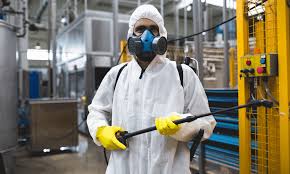It’s a sobering fact that young and new drivers are statistically more likely to be involved in road accidents compared to their more experienced counterparts. While this might not come as a surprise to many, understanding the multifaceted reasons behind this trend is crucial to improving road safety. In this article, experts from aDriving will delve into the unique factors that contribute to why new and young drivers are at greater risk on the roads.
Lack of Experience
The most obvious factor contributing to the higher accident rates among new and young drivers is their limited experience. Driving is a skill that improves with practice, and seasoned drivers have encountered and learned to navigate a wide range of challenging situations. New drivers, on the other hand, lack this practical experience, making it more difficult for them to react effectively in unexpected scenarios.
Overconfidence
One paradoxical aspect of young and new drivers is that they often overestimate their driving abilities. This overconfidence can lead them to take unnecessary risks, such as speeding, tailgating, or attempting risky maneuvers. This sense of invincibility can cloud their judgment and increase the likelihood of accidents.
Distracted Driving
In today’s hyper-connected world, distracted driving has become a significant problem among all age groups, but it’s particularly prevalent among younger drivers. Smartphones, in-car entertainment systems, and social media distractions pose a grave threat to road safety. The urge to stay connected can lead to reduced attention on the road, increasing the chances of accidents.
Peer Pressure
Young drivers are often influenced by peer pressure, which can encourage risky behavior. The desire to impress friends or fit in with a group can lead to dangerous driving decisions, like driving under the influence of drugs or alcohol, or engaging in street racing. Peer pressure can be a powerful force that clouds judgment and amplifies the risk of accidents.
Lack of Defensive Driving Skills
Defensive driving skills are essential for anticipating and reacting to potential hazards on the road. Many young and new drivers have not received comprehensive training in defensive driving techniques. These skills are not only critical for avoiding accidents but also for minimizing the severity of collisions when they do occur.
Nighttime Driving
Nighttime driving presents additional challenges, and young drivers are more likely to be involved in accidents during these hours. Reduced visibility, fatigue, and the presence of impaired drivers on the road make nighttime driving riskier. Inexperience can amplify these risks as new drivers may struggle to adapt to the challenges of driving in the dark.
Lack of Knowledge About Vehicle Maintenance
Vehicle maintenance is a crucial aspect of safe driving. Young and new drivers may not have a deep understanding of how to properly maintain their vehicles, including checking tire pressure, changing oil, or ensuring brake systems are in good working condition. Neglecting vehicle maintenance can lead to accidents caused by mechanical failures.
Conclusion
While it’s true that new and young drivers are statistically more likely to be involved in road accidents, it’s essential to view this issue through a nuanced lens. Factors such as inexperience, overconfidence, distractions, peer pressure, lack of defensive driving skills, nighttime driving challenges, and vehicle maintenance all play a role in this unfortunate trend.
According to one of the driving schools in Wellingborough area, to address this problem, comprehensive driver education programs, stricter enforcement of traffic laws, and awareness campaigns targeting young drivers should be implemented. Additionally, parents and guardians can play a significant role by providing guidance and setting good examples for responsible driving behavior.
Ultimately, it’s a shared responsibility to ensure that new and young drivers are equipped with the skills, knowledge, and mindset needed to stay safe on the roads. Through a collective effort, we can work towards reducing the number of accidents involving these drivers and making our roads safer for everyone.































